Sacred Sex: I’m a Beginner; Where Do I Start?
Sheri answers the question: Sacred Sex–I’m a Beginner; Where Do I Start?
Sheri answers the question: Sacred Sex–I’m a Beginner; Where Do I Start?
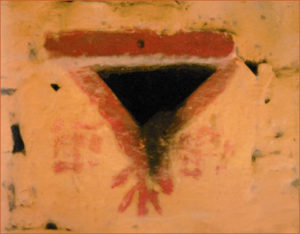 Vaginal Ecology: An Owner’s Guide to Care & Maintenance
Vaginal Ecology: An Owner’s Guide to Care & MaintenanceHere’s what you need to know about vaginal health — by understanding the ecology of your vagina you can learn to keep yours healthy, and prevent most vaginal infections and problems. Your vagina is a self-regulating, self-cleaning, resilient yet delicate ecosystem and the less you disrupt the natural balance, the better off you’ll be. This is what every vagina-owner needs to know!
The vagina isn’t just a nice place to own or visit, nor is it merely a passive space awaiting fulfillment; it’s a complex, integrated environment. Your vagina is a dynamic system with inherent safeguards in place to maintain a healthy equilibrium despite being susceptible to myriad influences that can alter its state of balance. After all, the vagina is exposed to fluctuating hormones, the consequences of our modern diet, our stress-filled lives and numerous artificial products that nature never intended our delicate tissues to withstand. And, of course, Mother Nature did intend our vaginas to have visitors whose presence and leavings can stimulate and impact our vaginal ecosystem. The vagina is well designed to handle many of these influences but sometimes succumbs to influences that cause imbalance, often leading to infection and general grumpiness all around when she’s out of commission.
Vaginal ecology is the study of the vaginal environment and its interactions. By understanding the ecology, you can better handle your vagina, and keep her happy and healthy by supporting the natural systems. When, despite your best efforts, the normal balance is disturbed and you get a vaginal infection (vaginitis), knowing how your ecosystem works can give you the power to remedy the situation and restore your environment.
A normal vagina is constantly kept moist by its slick, slippery and savory natural discharge. (I don’t like that its called discharge though — that sounds yucky — I call it vagina juice.) The smell and taste of a healthy vagina is mild, earthy and slightly pungent with a pleasant, musky aroma. It certainly doesn’t smell like fish or have a strong foul odor. A healthy vagina does not smell or taste bad! In fact, it’s full of sexy scent plus fabulous pheromones, the chemicals of attraction that we don’t consciously smell. Your vaginal juice is a naturally compelling, perfumed invitation.
Vaginal fluid mostly comes from the cells lining the walls, which act similar to sweat glands, producing moisture from the inner mucus membrane surfaces. The rest of the juice is made up of small contribution from several types of glands, located in the cervix and near the vaginal opening. Normal vaginal fluid varies in color from clear to white, although when it dries it may appear yellowish.
The amount differs from one woman to another, as well as for the same woman at different times, and ranges from scant to moderate. Some women are naturally wetter or 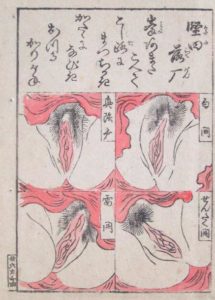 drier then others, just as some people have oily skin or dry hair or sweat more or less profusely.
drier then others, just as some people have oily skin or dry hair or sweat more or less profusely.
What’s most important for you as your vagina’s caretaker is to know what’s typical for you in amount, color, texture and odor. The vaginal fluid reflects where you are in your cycle, your age, your sexual arousal, hormonal contraceptive use, even your diet and fluid intake.
For women who are having normal fertility cycles the shifting pattern is usually similar each month. In general, most women are juiciest during the week leading up to and including the day of ovulation. Most women are driest the week before their period. Girls prior to puberty, breast-feeding moms and post-menopausal woman are drier and less varying.
A healthy vagina is full of friendly bacteria, mainly particular strains of Lactobacillus acidophilus. These good bacteria protect the vagina and keep it healthy in multiple ways. Their job is to control the population of unfriendly microbes such as yeast and ‘bad’ bacteria. They do so first by filling up the space, like a garden which is profusely filled with flowers, leaving no space for weeds. Next, the acidophilus maintain the proper vaginal environment by producing two important chemicals: lactic acid and hydrogen peroxide, a liquid form of oxygen. The lactic acid maintains an acid-alkaline balance (known as pH) in the vagina that’s acidic. Your helpful bacteria also produce hydrogen peroxide to create an aerobic (oxygenated) environment that discourages bad microbes. The beneficial bacteria are the essential hard-working engineers of the ecology of your vagina. When something causes a shift away from the ideal, they get working to bring your ecology back into line.
Check out my award-winning book, Women’s Anatomy of Arousal.
 You can also explore the online course by the same name, Women’s Anatomy of Arousal Online Course to learn about all things vagina!
You can also explore the online course by the same name, Women’s Anatomy of Arousal Online Course to learn about all things vagina!
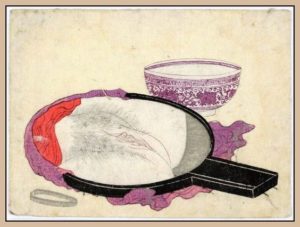 Vaginal Ecology: An Owner’s Guide to Care & Maintenance
Vaginal Ecology: An Owner’s Guide to Care & MaintenanceThere are a variety of things that can shift the vaginal equilibrium and swing the system out of harmony.
To begin with there are the regular changes of the fertility cycle. The vaginal environment normally fluctuates slightly throughout the month for women during their fertile years. Just prior to menses, there’s a normal ebb in the population of good bacteria due to hormonal influences which causes the vagina to be less acidic. This pre-menstrual week is frequently a time when the vagina is driest, most tender and more prone to irritation and infection. During your period is another time when the environment is at risk of swinging out of balance. Blood is alkaline, (the opposite of acidic) and its presence can encourage imbalance. Semen is another alkaline influence that impacts the ecosystem. Ideally, you have a strong population of good bacteria, so your body can easily accommodate these factors and shift back to an acidic state quickly.
For post-menopausal women, the vaginal environment is most like that of the cycling woman’s pre-menstrual week. In other words, it’s somewhat dry, fragile, less acidic and has lower levels of good bacteria. It pretty much stays the same all the time although internal and external environmental factors play a role. For example, frequent arousal helps to promote blood flow and keep it more moist. Avoiding vaginal environment stressors is especially important.
If your beneficial bacteria die off then your ecosystem becomes fragile and susceptible to a take-over by unfriendly bacteria or yeast. There are many influences that can induce a decline in the population of good microbes. Sometimes imbalance just seems to happen for no reason, but factors such as high stress, poor diet, misguided ‘hygiene’ practices or other influences affecting the vaginal environment are usually at work. And when you kill off all the flowers in your garden, you can be sure that the weeds will take over.
One of the most common causes of a die-off of your normal flora is taking antibiotics to treat an infection. They can kill off your ‘good guys’ as they do their job of killing off the bad ones that were causing the original infection. Anytime you take antibiotics, you are at risk for yeast overgrowth, which can result in vaginal candida (a yeast infection) and gastro-intestinal problems such as indigestion and diarrhea. This is one of the many reasons to be careful about taking antibiotics and to use them only when you really need them.
Normal vaginal discharge also contains a very small amount of natural sugars. The usual minimal level of sugar helps to discourage yeast overgrowth, while an increased level promotes it. The sugar level in the vaginal fluid is increased in diabetics and in pregnancy. Some women are sensitive to a high sugar diet and may find they need to be careful about their intake.
Although the vagina is usually pretty steamy, at or slightly above normal body temperature (which is fairly toasty at almost 100°), its best if it doesn’t get much hotter then that. Anything that creates and holds in heat can contribute to an overgrowth of yeast and lead to a vaginal infection. A wet bathing suit on a hot day, pantyhose, lycra or spandex work-out clothes, synthetic panties or leggings, plastic-backed panti-liners, even tight jeans can all create an overheated crevice, at risk of disruption. Wear cotton panties, natural fiber leggings or tights, cotton menstrual pads, and nothing at all at night (or when you can get away with it!) Keep your crotch cool and you’ll be glad you did.
Certain forms of contraception can affect the vaginal system, directly or indirectly. Any product that contains Nonoxynol 9, the chemical that’s in all spermicides can be problematic. Many women are highly sensitive to this chemical and will have inflammation as a result of its use. This includes condoms with spermicide, the jelly used with diaphragms and all other types of spermicidal creams, sponges and suppositories. It’s best to avoid this irritating sperm-killing chemical in all forms.
Hormonal birth control methods (birth control pills, the depo shot, implants, progesterone-containing IUDs, the ‘Patch’, the ‘Ring’), all work by tricking your body into thinking that its already pregnant and therefore doesn’t need to ovulate. So just like in actual pregnancy, there may be slightly higher amounts of natural sugars in your vaginal discharge, hormonal shifts and changes in the pH that may promote vaginal imbalance and infection.
Exposure to synthet ic chemicals and cleansing products can also shift the balance and cause a reduction in the supportive bacteria. Vaginal infections are commonly associated with what can be called “excessive American hygiene”, which includes the use of douche, vaginal deodorants, sprays, wipes, washes, powders, anti-bacterial soaps, deodorant soaps, body washes, bubble baths, and all of those so-called feminine hygiene products. These products are one of the main culprits in vaginal infections! Avoid them all. You do not need them! Don’t fall for the mass-marketing lies that tell you that you need to be “fresh” by using their chemical concoctions. You are fresh and delicious without that synthetic junk.
ic chemicals and cleansing products can also shift the balance and cause a reduction in the supportive bacteria. Vaginal infections are commonly associated with what can be called “excessive American hygiene”, which includes the use of douche, vaginal deodorants, sprays, wipes, washes, powders, anti-bacterial soaps, deodorant soaps, body washes, bubble baths, and all of those so-called feminine hygiene products. These products are one of the main culprits in vaginal infections! Avoid them all. You do not need them! Don’t fall for the mass-marketing lies that tell you that you need to be “fresh” by using their chemical concoctions. You are fresh and delicious without that synthetic junk.
While a healthy vagina produces it’s own luscious lubrication, the amount varies from woman to woman, and for any individual, from time to time. Arousal certainly increases the amount to some extent, which may or may not be enough. In general, I’m a big fan of using extra lubrication for sex play. Slather it on! And, be aware that there are a wide variety of products, some wonderful and some not so great for your vaginal garden.
My favorite natural lubricant is organic coconut oil. It smells and tastes great, absorbs easily into skin and mucus membranes and is naturally antimicrobial against the ‘bad guys’ while promoting the health of the friendly forces. The only significant caveat is that is not compatible with latex. If you use latex barriers, do not use coconut oil!
There are a wide variety of natural, organic water-soluble lubes for those of you using latex for protection. Keep an eye out for products containing glycerin though–for some women it seems to encourage yeast infections. Silicon lubes, while not natural, do seem to work well without disturbing the vaginal ecology. Many mainstream commercial lubricants contains all sorts of very unnatural chemicals, some of which can be disruptive to the natural vaginal balance. This is a good area for you to go natural and organic!
(For more about lubricants, read Lube Rules!)
Your healthy vagina doesn’t smell bad and doesn’t need artificial hygiene products to irritate it and kill off your normal flora. Clean with clear, clean water. That’s all you need. You can use your fingers to help rinse the crevices. A hand-held showerhead is excellent for crotch cleaning (and is also useful for self-pleasuring). A mild soap can be used on the outer areas such as the outside of the external lips but should be totally avoided on the inner lips and around the vaginal opening. There is never, ever a need to clean inside the vaginal canal at all. You have a self-cleaning vagina!
Imbalance exists before an infection is fully manifest. By knowing what’s normal for you, you can often catch a problem early before it becomes a full-blown infection. By understanding the early signs and symptoms of a shift then you have the power to swing the ecology back into a healthy direction and prevent most problems. Or, at least catch and treat an infection early.
If there is increased or profuse discharge, if it smells wrong, tastes bad, or looks odd, that’s abnormal and usually a sign of imbalance or infection. Be alert for any changes including a funny color, if your vagina juice is thicker or thinner then usual, clumpy or milky. Your vaginal juice should never itch or burn. Swelling and irritation are also warning signs of a problem. So, be sure to check your own vaginal fluid regularly, so you’ll recognize any changes early.

Now that you understand the basics of your vaginal ecology, you have the means to make good decisions to protect and care for your delicate environment. You can support your healthy system and avoid the things that might disrupt your natural defenses. By knowing what’s normal for you, and paying close attention, you can detect early signs of a problem and often fix it before it becomes a full-blown infection. When signs of imbalance occur, you can take action to correct the system yourself or get help from your health care provider, before things get really bad.
Essentially, your genitalia are a self-regulating, self-cleaning ecosystem and the less you disrupt the natural balance, the better off you’ll be. Don’t mess with a good thing. Appreciate your elegant system with its natural resilience and ability to maintain itself. Respect and support your vaginal ecology and you’ll have a happy healthy haven that feels good so you, your vagina and your friends can have lots of luscious fun!
Check out my award-winning book, Women’s Anatomy of Arousal.
 You can also explore the online course by the same name, Women’s Anatomy of Arousal Online Course to learn about all things vagina!
You can also explore the online course by the same name, Women’s Anatomy of Arousal Online Course to learn about all things vagina!
Here’s one of the questions and my answer from last night’s Ask the Sex Teacher ANYTHING About Sacred Sex webinar.
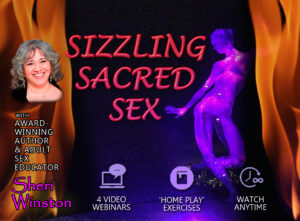 Join Sheri to ‘attend’ her four-session online course: Sizzling Sacred Sex: What It Is & How to Have It. Explore the mysteries and magic of sacred pleasure! Beyond the 4 class sessions, you get resources, home play assignments, suggested rituals and more!
Join Sheri to ‘attend’ her four-session online course: Sizzling Sacred Sex: What It Is & How to Have It. Explore the mysteries and magic of sacred pleasure! Beyond the 4 class sessions, you get resources, home play assignments, suggested rituals and more!
Are you wondering about our Online Intimate Arts courses? Go here to find out what they’re all about! Discover the easy way to to learn to have more pleasure in the comfort of your own home!
All primal cultures recognized the sacredness of sex. After all, sex makes life, so how could it be anything other than sacred? In cultures that especially revered sexuality, Eros was considered a path to connect to the gods and goddesses, to the Divine. Sex was considered a prayer and an invitation to fertility for all life and all beings. Any babies that resulted from sex were an added blessing.
Many of these cultures used similar practices and techniques to draw on the power of Eros in service to the sacred. My approach to sacred sex is drawn from the many paths that cultures throughout time have followed to honor the spiritual in matters of the body and the bedroom.
‘Sacred’ means different things to different people. For our purposes, we can start with the idea that sacredness is what makes things feel special, cherished and unique. For me, it’s more than that, though. The ‘sacred’ is closely related to the notion of ‘spirit,’ which I see as something real and also to be celebrated.
When I refer to spirit, I’m not talking about religion or even spirituality. Perhaps because of my decades as a practicing midwife, I think of spirit as life’s incorporeal aspect, as the part of you that entered your body-mind when you took your first breath. It’s the magic spark that animates you beyond the mechanistic physical plane. But it’s not just in you—it’s in everything. When I write about connecting to spirit, I mean connecting to the sanctity of life, the holiness of all beings, and the sacred fire within you. It’s the Divine not as a separate, superior being, but as the mysterious force that’s manifest in everything. When your sex is integrated with your spirit, it can lead to not just transcendent mind-blowing sex, but a personal and ecstatic experience of the Divine.
Spirit is what the Native American Lakota people call Wakan Tanka, the ‘Great Mysterious Power’ or the ‘sacredness that resides in everything.’ It’s the ineffable energy that, among other things, connects the carnal erotic to the mystery beyond matter.
We have been endowed with tools that enable us to ride sex’s magic carpet into the sacred realm. Some of these are optional—sacred sound, for instance. One, however is not. This is sacred intention.
 Sacred Intention
Sacred IntentionHolding the intention to make something sacred is your most basic spiritual tool. You can use your other spiritual tools to make your intention more concrete (which often helps), but your most essential skill is the intention to have your sexual practice be sacred.
There’s something magical in this. If you hold the intention for something to be spiritual or sacred, that’s what it becomes. It’s a simple yet profound practice. You can use sacred intention whenever you have sex, be it solo or partnered, a quick snack or a prolonged feast. Define a sacred purpose for your pleasure, create a consecrated container, touch on your sacred intention during your erotic activities, appreciate and affirm the holiness of your erotic actions—any of these choices can be transformative. If you wish, you can dedicate your erotic energy and your orgasms to a spiritual purpose such as enlightenment, blessing or healing.
You can practice sacred intention whenever you wish. Depending on the circumstances, it may not take you to the experience of the sacred. On the other hand, it may. One thing is certain—you won’t experience sacred sex if you don’t hold a sacred intention.
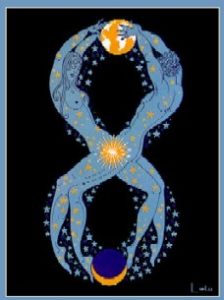 You Say You Want an Evolution
You Say You Want an EvolutionI’ve been a Wholistic Sexuality Teacher, midwife, nurse and gynecology practitioner and an enthusiastic sexually active woman for many decades and I still don’t have a simple answer to that question. I can tell you what it’s not. Sex isn’t just some brief lusty activity involving your reproductive organs, hidden behind a closed bedroom door. It’s so much more then that.
Sexuality is a force that is colossally complicated and mesmerizingly compelling. It’s an unavoidable part of being human, yet shrouded in mystery. Sexuality is an interplay of desire and denial, fantasy and reality. It’s a complex physical and biological template tangled with an equally elaborate cultural overlay. Sex is powerful and promising, chaotic and conflicted, ecstatic and blissful, frustrating and disappointing. For some it is demonic, for others, divine. Sex is emotional, energetic, and often overwhelming. Its power is personally pervasive and culturally ubiquitous, with messages both hidden and overt. Potentially, our sexuality can be deeply connecting; of us to ourselves, to others and to the great mystery of life. Unfortunately, that potential is never achieved for many people.
Currently, sex in our world is based on negative models grounded in ancient history, perpetuated by modern media and the convoluted chaos of contemporary culture. For many, sex is a source of unhappiness, frustration and a deep unsatisfied longing. We live in a unique time and place where sex is overtly in-your-face and covertly in your pants, all the while harboring undercurrents of shame, guilt, fear, denial, lust and self-loathing for our bodies, our desires and our pleasures.
 I believe that we need a new model of sexuality that incorporates a bigger picture of what sex is, of who we are and what we can be as sexual beings. I see a desperate need for a model where sex is honored, celebrated and sacred. So I made one up.
I believe that we need a new model of sexuality that incorporates a bigger picture of what sex is, of who we are and what we can be as sexual beings. I see a desperate need for a model where sex is honored, celebrated and sacred. So I made one up.
We had a sexual revolution, with its bumpy gains, imperfect progress and some serious backlash. Now it’s time for a sexual evolution that I call Wholistic Sexuality. In essence, my Wholistic Sexuality model is about connection.
This philosophy brings sex back into connection with all aspects of our selves and our lives in a way that honors the power of sexuality. Sexual expression, pleasure, intimacy, fun and joy are necessary to be integrated and whole. In order to be a fully vital human being, we need our sexuality to be intact, functioning and healthy.
This does not imply that in order to be healthy we must be in sexual relationships with others, but rather, we must create and maintain a good sexual connection with ourselves. In other words, Wholistic Sexuality is, first and foremost, about your relationship with your Self. This includes your relationship with your body, your history and experiences, the beliefs that you were exposed to as you grew up, your current and past relationships, your community, the media, your culture, and all other aspects of your world. All of these components and more create your internal sexual relationship. Indeed, your sexuality is a hologram of your inseparable mind, body, heart and spirit. Your sexuality is ultimately, about everything.
It seems everyone these days is striving to be healthy. Exercise, meditation and healthy eating are now mainstream ideas, supported by countless cultural messages. But sex hasn’t yet emerged from the shadow of repression and shame to become part of what is considered a healthy lifestyle. Only when you connect your sexuality to the rest of your life, will you become integrated and truly healthy.
I believe that a sexual evolution is beginning and will continue to occur. It’s a part of the evolution of personal and global consciousness that is occurring planetwide. And since I believe that evolution begins at home, I encourage you to explore and enhance your connection to your own delicious sexuality. After all, without sex, life itself would be impossible. And a whole lot less fun!
 (By Sheri Winston and Carl Frankel)
(By Sheri Winston and Carl Frankel)
Because Prince was the rare artist-celebrity who was both deeply religious and openly sexual, his untimely passing has placed a sudden spotlight on the topic of sacred sex. His view of the relationship between sex and God provides invaluable insights to people who want to practice sacred sex, but aren’t sure how to do it.
Many religious faiths are vehemently sex-negative—anti-sex and anti-pleasure. You can only get to heaven, these traditions tell you, by transcending the body and its shameful desires. Because these attitudes have permeated our culture, many people see sex as sinful and the farthest thing from sacred.
Prince was the absolute opposite of sex-negative. He believed that sex was one of God’s greatest gifts to humanity. For him, all sex was sacred. He believed that we can have sex that both feels amazing and connects us with the Divine. That’s a pretty radical belief in a world where sex has become deeply associated with sin.
Here are four takeaways from the Gospel of Prince about how to have sex that is both hot and holy.
1. Sacred sex isn’t ‘sex lite.’ It’s not sex with the raw, lewd, hot stuff stripped out. Prince made it clear that sex can be sacred and wildly profane at the same time. Since sexual desire was a gift from God, unbridled lust was one of many possible ways to praise Him. (An especially fun way!)
In Darling Nikki, he meets the song’s protagonist when she’s “in a hotel lobby, masturbating with a magazine.” They go upstairs and have a “funky time.” She’s quite the bedmate: Prince’s body “will never be the same.”
Sounds like quite the delightfully raunchy encounter, right? Only the song ends with a surprise—these words played backward:
“Hello, how are you? I’m fine, ‘cause I know
That the Lord is coming soon, coming, coming soon.”
Prince is suggesting that no matter how hot and dirty the sex gets, God is fine with it. Although Nikki turned him into a “dirty little Prince” whose one desire was to “grind grind grind,” that didn’t make him a sinner. He was “fine.” His journey into lust wouldn’t keep God from “coming soon.”
Great news! You can get down and dirty and still have it be sacred.
2. There’s a big gap between Prince’s view of sex as inherently sacred and the notion many people have of sacred sex as a sort of special sauce that elevates the usual sexual experience. Although many people associate sacred sex with ancient erotic traditions like Tantra, that’s not required. In Adore, Prince writes:
“When we be makin’ love
I only hear the sounds
Heavenly angels cryin’ up above
Tears of joy pourin’ down on us.”
There’s no mention here of special breathing techniques or any of the other sacred-sex moves you can study up on in the esoteric traditions. Prince and his partner were madly in love and making love. That was good enough to make it sacred. How do we know? Because the angels wept with joy for them.
Special techniques can help—a lot, actually—but sex doesn’t become spiritual just because you paint by the sacred-sex numbers. Sex is sanctified by what your soul brings to it.
3. Prince believed that the body is inherently sacred—both a gif t from God and a path to God. In The Human Body, he writes:
t from God and a path to God. In The Human Body, he writes:
“Can U get me excited?
Excited enough 2 thank the God above 4 the human body.”
Here, too, we see him making his familiar sex-and-God connection. If you turn me on enough, he’s saying, the spirit will come over me and I’ll cry “Hallelujah!”
We can follow Prince’s lead on this one, too. Sacred sex transmutes physical arousal into powerful feelings of gratitude to God for giving us hearts that can love as intensely as they do, and bodies that can experience such amazing pleasure.
4. For Prince, sex was right up there alongside salvation as part of God’s grand plan—so much so, in fact, that the Second Coming, as imagined by Prince, sounds suspiciously like a sex party.
From Sexuality:
“Stand up everybody, this is your life
Let me take u to another world, let me take u tonight
U don’t need no money, u don’t need no clothes
The Second Coming, anything goes
Sexuality is all u’ll ever need
Sexuality—let your body be free.”
That’s right, folks—Prince basically had his God presiding over an orgy. A holy orgy. Talk about radical sex-positivity!
Which brings us to our fourth takeaway: If you want to practice sacred sex, be like Prince and be sex-positive.
Prince left us many gifts, including his vast musical output and his amazing performances. Perhaps his greatest gift, though, was his unshakable belief that sex didn’t cause our downfall. Quite the opposite, actually—it’s what brings us back to the Garden.
The first line of business, of course, is to establish how common squirting is in porn as a whole. While there aren’t any statistics to cite regarding the number of gushes per minute of video in the endless library of professionally produced porn (let alone amateur and live-cam), we do know how many of our responders have actually seen squirting porn: sixty-four percent, whereas only thirty-six percent have never seen it. Of course, we have no way of knowing how much porn in general the respondents regularly consume. Still, it’s safe to say that squirting porn is common and widely available. That’s not proof that female-ejaculation is real. It’s mighty suggestive, though.
Oddly enough, although over six hundred people responded that they have seen squirting porn, less than four hundred people who believe in the validity of female ejaculation cite squirting porn as a reason for their belief. This statistic doesn’t really tell us much about female ejaculation as a scientifically proven occurrence, but it does say quite a bit about the merit most viewers give to porn as a realistic portrayal of true sexual experience. So, how much trust do most people give the professionals?
It turns out, not as much as you’d think. Of our respondents, only ten percent believe that squirting porn is always real. Forty-seven percent think it is sometimes real, twelve percent think it’s never real, and a whopping thirty-one percent don’t know one way or the other. In other words, when it comes to female ejaculation, the jury is out on whether or not we can trust the professional squirters. This has to make them feel pretty bad, right?
Probably not.
In fact, based on this video, even porn stars aren’t sure if female ejaculation is real or fake!
If you can’t trust the pros, who can you trust? (That question is dripping with sarcasm.)
 As many of you know, we recently fielded a survey on female ejaculation. We’ve gotten over 1,400 responses so far, enough to be able to claim a reasonable amount of statistical significance for our data.*
As many of you know, we recently fielded a survey on female ejaculation. We’ve gotten over 1,400 responses so far, enough to be able to claim a reasonable amount of statistical significance for our data.*Here’s our first report about our findings.
For most gushers, whether or not they’ll ejaculate is unpredictable. Five percent of gushers say they “always” ejaculate. Twenty-seven percent “usually” squirt, 42% say sometimes, and 22% “rarely.”
(Three percent of respondents who said they female-ejaculate responded ‘never’ to this question. Contradictory, right? Our comments section suggests that most of these folks had one squirting experience in their lives, then never again.)
Fifty-three percent of gushers say they’re likelier to squirt when they’re having partnered sex. Twenty-one percent say it’s more likely when they’re playing solo, and 26% say the likelihood is about the same.
Hey—what are friends for?
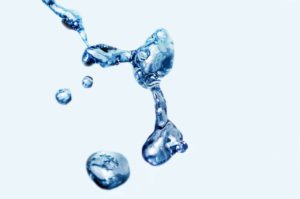 Get Out the Puddle Pads!
Get Out the Puddle Pads!When asked how much they gush, our respondents’ answers were all over the place. (Like the female ejaculate, maybe.)
Only 1% said they emit “a few drops.” Eleven percent said a “small amount.” “More than a little, less than a lot” came in at 23% and “I’m a super-soaker” registered at 31%.
“Varies” was the highest number of all—34%.
Bottom line, when women squirt, they tend to produce a lot of liquid. The amount tends to be unpredictable, though. Many women produce more on one occasion, less on another.
About 50% of squirters learned how to do so. (Seven percent of all squirters said they learned with a teacher, 25% with a partner, and 17% taught themselves.)
Fourteen percent of squirters said they’d always been able to do so. Fifty percent of respondents said they developed the ability spontaneously as they grew into their sexuality.
(Total percentages exceed 100% because multiple answers were permitted.)
Two percent of gushers report having the ability as pre-teens. Three percent learned how to gush when they were over 60. Over 50% of all gushers learned to squirt when they were thirty or older.
The moral: It’s never too late!
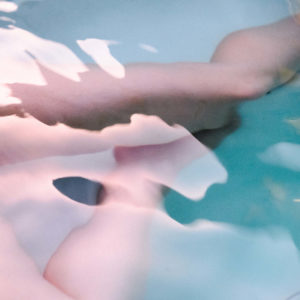 Let’s close with some quotes about gushers’ personal experience:
Let’s close with some quotes about gushers’ personal experience:
Do any of these comments ring true for you? Where do you fit in?
 The Joy of Squirting—How I Learned to Be a Juicy Goddess
The Joy of Squirting—How I Learned to Be a Juicy GoddessWhether you call it squirting, gushing, or female ejaculation, it’s a delicious form of hot wet pleasure. Releasing this fluid, also called amrita, the nectar of life, is truly an ecstatic experience. Here’s how I learned to go from orgasmic to a gushing goddess—and you can, too.
When I first heard about female ejaculation (FE), I was already working as a nurse-midwife and gynecology practitioner. I had never experienced it myself. At first, I thought it was made-up porn nonsense. But over the next few years, I had patients who reported what sounded like FE: profuse release of fluid with high-level arousal and/or orgasm. This is when I began to suspect that gushing was a real but rare experience.
In the mid 90’s, I had an up-close personal experience of squirting with a female partner who was an ejaculator. She told me she had always ‘gushed’ with orgasm. The amount was profuse. I observed the fluid spurting out of her urethra. It did not smell like urine, wasn’t yellow, and it tasted briny and tangy but not at all like pee. It didn’t leave any stain on a white towel. When air-dried, the fragrance on the towel was quite pleasant.
As I’d been having orgasms for almost 30 years without such a response myself, I assumed it was something only a small number of women had the natural ability to do. I now ‘believed’ in FE, as an uncommon but natural ability.
My next shift in thinking came when I met a number of women who said that they had learned to squirt, commonly in their late 30’s and 40’s. This certainly got my interest! I started to believe that gushing might be a learnable skill.
I already knew that many sexual responses were based on skills that were learnable. I’d taught myself a variety of useful skills such as how to have assured orgasms, orgasms from intercourse, non-genital orgasms, and so on. Once I realized that female ejaculation was a skill that could be acquired, I figured that if these other women had learned to ejaculate, so could I. At that time, though, there were no books or classes on the topic, so I just kept asking questions when I had the opportunity while also expanding my orgasm skills and holding on to the vision that it was possible for me to experience squirting myself.
Sure enough, now that I knew it was possible and learnable, and also had a foundation of orgasmic proficiency, it happened. After a delightful night of extensive stimulation and dozens of orgasms, I experienced my own dramatic gushing mega-orgasm. It was profuse, wildly expanded my already pretty wild orgasms, and had a component that felt deeply sacred and empowering. I was now a true believer. No question about it—squirting was a learnable skill!
Over the next few years, I became more proficient at having a wide spectrum of orgasms, including gushing ones. I was reinforced in my basic belief that if a person combined comfort and connection to their body, knowledge, skill and practice, they could learn to squirt.
The nature of my gushing varies quite a bit. I can produce vastly different amounts of fluid. With certain types of stimulation, especially if it’s prolonged, I may gush buckets. If I’m not in a deep state of arousal, inadequately stimulated or dehydrated, I produce very little. Not all my orgasms include obvious gushing at all.
I’m certain that I’m not producing pee. When I gush, the fluid I produce smells remarkably like amniotic fluid, briny and fresh like seawater. When I was still in my cycling years, it would be sweeter around ovulation. While it does emerge from the urethral opening, it’s not yellow and doesn’t smell like urine. I’ve checked the pH and it isn’t the same as urine.
Another consideration for me is that I can produce considerably more ejaculatory fluid than I can urine. When I pee, a finite amount of urine comes out. It takes some time before I can generate more. In a really prolonged orgasmic series of ejaculations, I can produce huge amounts of fluid. As long as I’m well hydrated, I can keep going. I measured the fluid once and found that I can expel about ½ cup with each series of gushes—and then keep going to have many additional series of gushes of similar amounts. I could never produce that much urine in such a short amount of time.
As I was developing my gushing abilities, I became intensely interested in the anatomy and physiology of the process. Since it was clear to me that it was not urine, diluted or otherwise, I wondered where the fluid came from. For a while, I found no plausible explanations for it. The scientific perspective seemed to be that it must be urine since there appeared to be no other place for a large amount of fluid to come from other than the bladder.
I did not (and do not) accept that theory. It was not congruent with my personal experience. I believed there must be another anatomically accurate and scientifically valid explanation.
My ‘aha’ insight into the possible mechanism of female ejaculation followed. You can hear about my ‘Eureka’ moment and find out where all that liquid comes from in my recorded online course The Learnable Art of Female Ejaculation. You can also get all of my subsequent learning about FE such as why we squirt and, of course, lots of tips and techniques for facilitating gushing goddess orgasms for yourself or your partners.
I have no doubt that many of the factors that contribute to the ability to squirt are learnable. These include getting to deep levels of arousal, orgasmic expansion skills, how to relax, release and expel, the mindset of permission, an accurate understanding of the relevant anatomy and specific manual stimulation skills. When women develop these skill sets, it increases the likelihood that they’ll have sexual experiences that are deeply satisfying and orgasmic, whether you discover the ability to get super juicy or not. If women also develop the ability to have glorious gushing orgasms, all the better!
In my teaching about sexuality, I always emphasize that there are a wide range of pleasure pathways and many ways to access deep wells of ecstatic experience. Female ejaculation is not required to have extraordinary pleasure or to be sexy or for any reason other than that it’s a blissful way to expand the menu of orgasmic options.
Pouring forth amrita feels awesome, empowering and profoundly liberating. It taps into deep emotions and feelings of connectedness with yourself, your partners and the universe. It produces a sense of deep release and post-orgasmic relaxation. When you’re gushing you feel like a goddess (or in the presence of one)—beautiful, gorgeous, and wild.
 Go here for more information about the recorded online course The Learnable Art of Female Ejaculation. For all genders.
Go here for more information about the recorded online course The Learnable Art of Female Ejaculation. For all genders.
